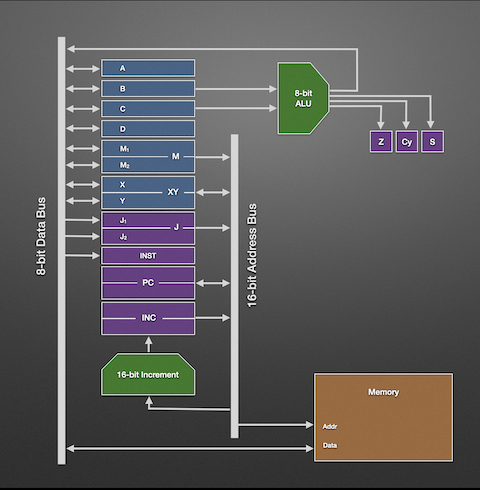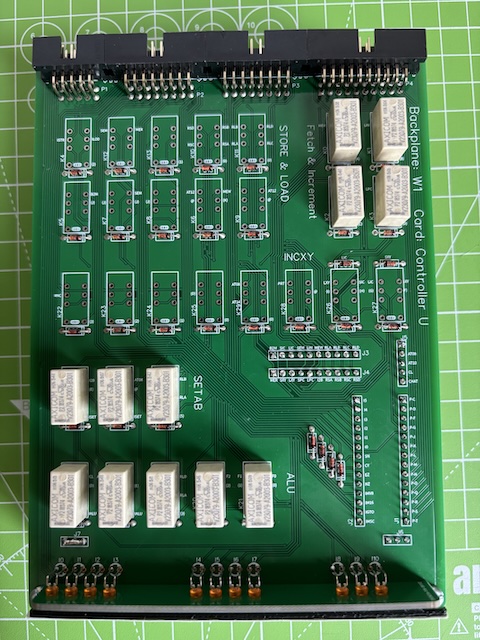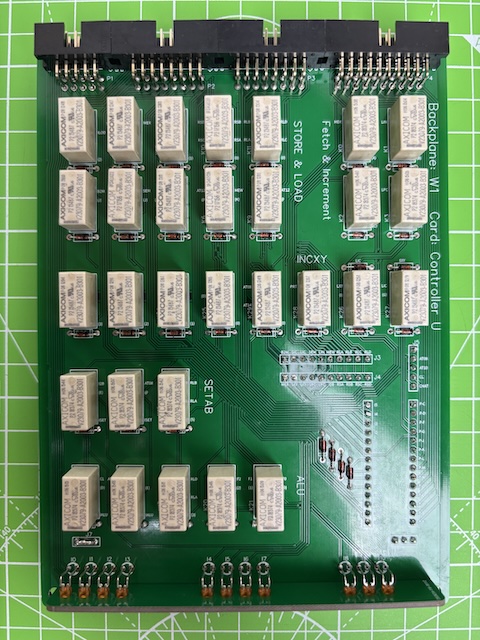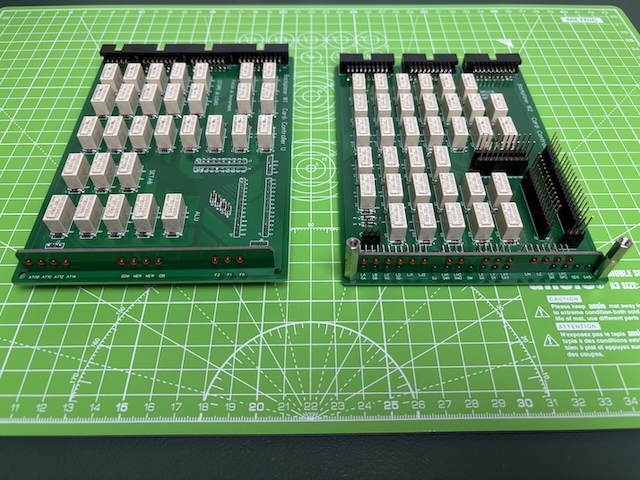Well, it’s only taken 12 years but my computer has finally reached a major milestone - Turing completeness.
The architecture of my computer has, of course, been Turing complete all along, that is, it’s capable of simulating a Turing machine and therefore represents the design of a general purpose computer.

The challenge has been bringing that architecture and design into physical reality and that’s where the last 12 years have gone. Now, obviously it doesn’t take that long to build a relay computer if you’re working on it full time but for me this has been a part time hobby and something I’ve fallen in and out of fondness for. Nonetheless, my relay computer is now Turing complete.
So, what’s changed to make this a milestone event? … I’ve soldered some relays in to the controller card.
In my last post I covered the LOAD, STORE and INCXY instruction classes. These are the last of the major instructions to be completed on the controller cards and of all of these it’s STORE that tips me over to Turing completeness. To date, my computer has been rather constrained in that the only place data can be written and amended is in the eight general purpose registers. That’ll support running simple programs but to do anything more complicated you really, really need to be able to write values to memory.
This is what the upper controller card looked like before the milestone:

… and this is what it looks like after …

… and that completes the controller cards generally …

… and with that my computer becomes Turing complete and I can start writing much more complicated programs. How much more complicated? Well, how about calculating Pi to 20 decimal places?
If you’ve been following my YouTube channel you’ll know calculating Pi is exactly the challenge I’m currently undertaking. At the point of writing this I’m roughly half way through the challenge and although I don’t know exactly how I’ll get my computer to calculate Pi (it’ll involve long division, addition and subtraction at the very least) I know that because calculating Pi is computable then it can be calculated by a computer and because my relay computer now is worthy of the title ‘computer’ it can theoretically do it. The challenge, if anything, will be will my relay computer run reliably enough for long enough to achieve the result.
Here’s the video in the Pi series where my computer becomes Turing complete and at the end I run a revised version of my Fibonacci series program but this time the values are written into memory rather than being overwritten in the registers at each iteration.
So, is the computer ‘done’ now? Well, not really … it’s definitely a true computer now but there’s plenty of scope for extending and improving the computer. Particularly in the arena of input and output there’s much that can be improved. Loading programs at the moment is a particular pain point and requires entering hex instructions line-by-line so that could do with ‘something clever’. Likewise, writing values to memory is fine but it’s not that easy for the human operator to see those values so some form of output be that a display of some kind or maybe even a printer would be a great addition.
For now though I wanted to mark the point my computer became a ‘computer’ and I think the next milestone is getting it to do something ‘useful’ … perhaps calculating Pi if things go well.